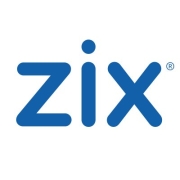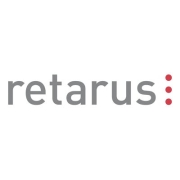A Secure Email Gateway safeguards organizations by monitoring and controlling incoming and outgoing emails. It protects against threats like phishing, malware, and spam, ensuring safe communication.
Secure Email Gateway solutions address security challenges in email communication by filtering malicious content and preventing unauthorized data leakage. They offer advanced threat detection, leveraging real-time threat intelligence, to effectively combat evolving threats. Integrating smoothly with existing systems, they provide a robust defense without compromising email performance. These solutions are crucial for organizations that prioritize data protection and regulatory compliance, ensuring a secure email environment.
What are the critical features of Secure Email Gateway?
What are the benefits and ROI of Secure Email Gateway?
In financial services, Secure Email Gateway solutions help prevent sensitive data leakage, adhering to compliance standards like GDPR and HIPAA. In healthcare, they protect patient records while enabling seamless communication. For government agencies, they secure critical information against cyber threats and intercept unauthorized access attempts, enhancing the overall security posture.
Secure Email Gateway solutions are crucial for maintaining email security in organizations. They ensure protection against a variety of threats while supporting compliance efforts. Implementing Secure Email Gateway helps organizations secure sensitive information and maintain trust with clients and partners.























A Secure Email Gateway provides robust protection against phishing by using advanced threat intelligence and machine learning to identify and block malicious emails. It scans incoming and outgoing emails for signs of phishing, such as suspicious links or unusual sender addresses. By isolating potential threats before they reach your inbox, SEG ensures your organization’s sensitive information remains safe, significantly reducing the risk of a security breach.
What are the key features to look for in a Secure Email Gateway?When evaluating Secure Email Gateway solutions, prioritize features such as real-time threat analysis, spam filtering, malware scanning, and data loss prevention. An effective SEG should also offer email encryption to secure communications and easy integration with your existing security infrastructure. Look for a solution with a user-friendly interface that provides comprehensive reporting and analytics to help you understand and manage email threats better.
Can a Secure Email Gateway improve email compliance?A Secure Email Gateway plays a crucial role in ensuring email compliance by enforcing data protection policies and regulations. It helps organizations comply with industry standards such as GDPR, HIPAA, and others by encrypting sensitive emails and preventing unauthorized data sharing. By controlling data flow and monitoring email communications, SEGs ensure adherence to compliance regulations, reducing the risk of penalties and data breaches.
How does email encryption work in a Secure Email Gateway?Email encryption in Secure Email Gateways ensures messages are only readable by intended recipients, protecting sensitive information from unauthorized access. The encryption process transforms email content into scrambled text, which can only be decrypted with a specific key. SEGs facilitate seamless encryption, often requiring no additional steps from users, maintaining an efficient and secure communication flow within the organization.
What challenges can arise when implementing a Secure Email Gateway?Implementing a Secure Email Gateway can present challenges such as integration with existing IT systems, managing false positives, and ensuring user adoption. It’s crucial to choose an SEG that aligns with your current security framework and offers comprehensive support for a smooth transition. Providing adequate training and awareness to employees ensures they understand the benefits and functionalities of the SEG, minimizing resistance and maximizing its efficacy.